Amtrak carried 9.0 percent more passenger-miles in April 2025 than in the same month before the pandemic, according to the state-owned company’s monthly performance report. The airlines did almost as well, carrying 5.8 percent more riders in April than in 2019. However, Americans drove only 98.5 percent as many vehicle miles in April as in 2019.
April transit data are not yet available and will be posted here as soon as possible after the FTA releases them.
It’s hard to guess why driving dropped, at least as a percentage of 2019. The economy was slowing, rail freight was declining (though still more than 2019), but perhaps truck freight had fallen.
Last month I erroneously reported that Amtrak carried 21 percent more passenger-miles in March 2025 than in 2019. Actually, that was 2020, and the effects of the pandemic were already being felt in March. The correct number was 9.5 percent more in March 2025 than 2019. The chart above uses the correct data.

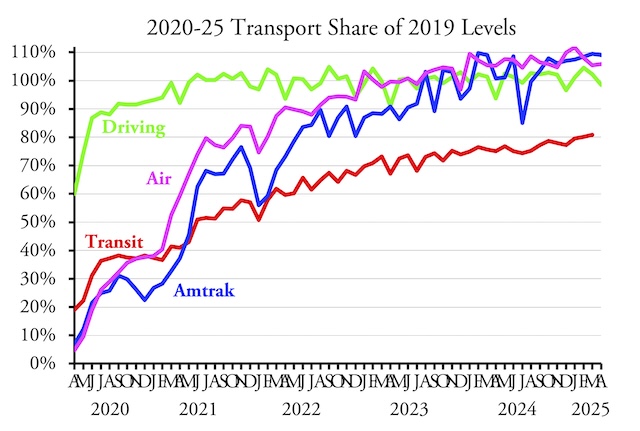
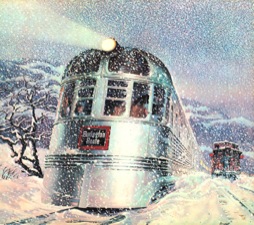
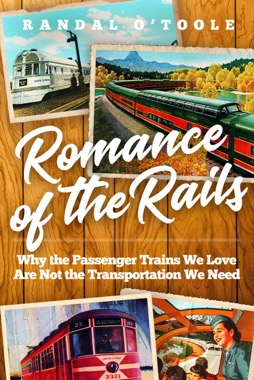

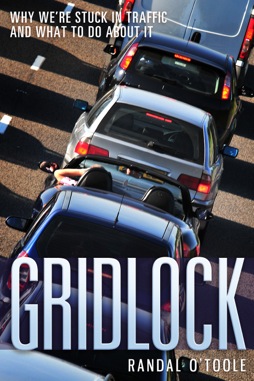
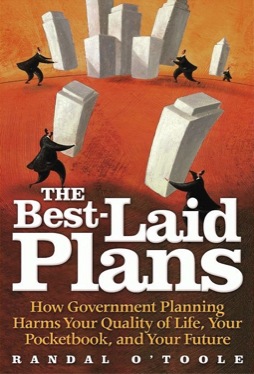
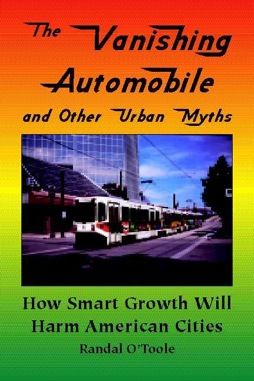
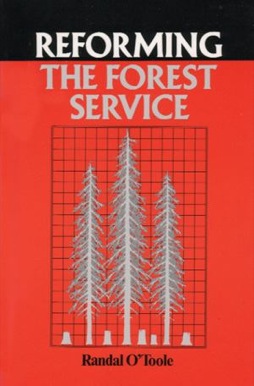
“In December 2020, I predicted that transit ridership would never rise above 75 percent of pre-pandemic numbers. I now think that even this is probably too high.”
https://ti.org/antiplanner/?p=20080
Transit is above 80%.
Systematicvisionary,
You’re right. Maybe I was wrong. But all other forms of transportation completely recovered years ago and now are growing beyond their pre-pandemic numbers. Maybe transit recovered as much as it was going to recover a year or so ago and now is just experiencing growth due to population growth, expansions of new lines, and similar factors.
The prophecy of doom did not come true, especially in case of Amtrak. Just as the doom prophecies for cities will not happen. The development of cities is subject to cycles. There are phases of decline and rise. But overall cities have survived as a concept. The current decline of American cities is similar to what happened to Roman cities when the empire was in decline. Usually the decline of cities and decentralization in general is a sign of societal breakdowns. The suburbanization process is an attempt to escape the decline rather than an improvement. Without cities there is no civilization. I am optimistic for cities as we are seeing that humans are increasingly self-conscious about their own health and suburbs force physical and mental apathy, resulting in a decline of creativity, innovation and cognitive readiness. Those who want to win the economic and societal competition will have to leave the suburbs and move to cities again. Just like once when armies of rural population moved to the industrial cities to find prosperity. And if that happens, cities will need a transportation form that is compatible with city density, which can only be transit.
Neither have your prophecies of doom for U.S. suburbs come true Systematicvisionary aka Stadtmensch aka Statdthaus aka Donnerwetter, etc.
Also you continue to be unclear as to whether you are talking about “built form” or the geopolitical boundaries of a city. The suburban “built form” you despise is alive and well within the geopolitical boundaries of cities.
Your logic is more like wishful thinking. People do not need to move to industrial cities for prosperity. To the extent a “city” is a potential source of prosperity, people can live in the where and in the built form they prefer and travel as needed. Indeed where local government has created UGBs to try to force undesirable density, folks find the housing they want elsewhere and travel as needed (leapfrogging).
You missed the point. For people wanting to become prosperous they need to live in the city itself. This is supported by several key economic and social factors inherent to urban environments. Cities are unequivocally the powerhouses of economic activity. The World Bank reports that cities account for a staggering 80% of global GDP and 88% of private sector job creation. This concentration of economic output directly translates to a higher likelihood of finding diverse and well-paying employment opportunities. Urban areas offer a much broader spectrum of industries and specialized roles compared to the more localized and often less diverse job markets found in suburbs. This variety allows for greater career mobility, skill development, and the potential to find a niche with higher earning potential. Data from the U.S. Census Bureau has shown that urban households generally have higher median incomes than rural households. The overall trend points to cities offering greater earning capacity. A study from 58 countries revealed that rural workers are paid, on average, 24% less than their urban counterparts on an hourly basis, and only half of this gap can be explained by discrepancies in education, job experience, and occupational category. Cities benefit from “agglomeration economies,” where the concentration of people and businesses leads to increased productivity and innovation. Hall and Ciccone (1996) estimated that doubling county density leads to a 6% increase in worker productivity. This synergistic effect can translate to higher wages and more opportunities for those within the urban ecosystem. Globally, educational attainment is significantly higher in cities than in towns and semi-dense areas. This concentration of educated individuals creates a more skilled workforce and a competitive environment that often drives innovation and economic advancement. Talent Pool and Networking: Cities attract and retain a larger and more diverse talent pool. This makes it easier for entrepreneurs to find qualified workers and for individuals to network with peers and mentors, opening doors to new opportunities and collaborations that are essential for career growth and prosperity. Cities often have robust ecosystems for entrepreneurs, including access to capital, mentorship programs, and a larger customer base. Grants and loans specifically designed to foster economic growth are more common in urban centers, encouraging new business ventures. The higher population density in cities translates to increased foot traffic for businesses, which is particularly beneficial for retail and service industries. This natural customer base can be a significant advantage for new and growing businesses. Cities offer an unparalleled variety of goods, services, and amenities, leading to a higher standard of living and greater consumer satisfaction. This “convenience” factor means less time and money spent on travel and searching for necessities, freeing up resources that can be directed towards other aspects of prosperity. Urban areas generally have superior access to public infrastructure, modern technology, and a wider range of services, from healthcare to cultural institutions. This enhanced access can contribute to overall well-being and productivity. The data consistently suggests that the economic engines of prosperity are primarily located within city limits. The concentration of jobs, higher wages, educational opportunities, and a dynamic entrepreneurial environment make cities a more advantageous place for individuals striving for economic advancement and overall prosperity.
No, you missed the points and again you avoid addressing what you mean by “city”.
If you are referring to geopolitical boundaries, you can find suburban built form housing within the city boundaries. There’s an example of people living in lower density housing (4 or fewer housing units per acre.
If you are referring to built form, you will find suburban built form housing inside and outside the city boundaries.
Regardless of whether the housing is within or outside city limits, the daily drones that need to go into the office commute. So it’s not necessary to be housed within the city limits to work within the city. Moreover being within city limits does not imply transit feasibility for commuting.
I find your arguments to be based on specious or equivocal rationales.
Wrong, I am talking about cities as an urban form. The entire time. Cities are more prosperous than suburbs and suburbs are more prosperous than rural. The higher the population density, the greater the prosperity. This has always been the case from the early beginning. The very existence of early cities indicated a society capable of producing a surplus of food. Before urbanization, nearly everyone was engaged in subsistence agriculture. The ability to feed a large, non-agricultural population in a concentrated area meant that agricultural techniques had advanced, leading to increased food production. This surplus freed up labor for other pursuits. With a reliable food supply, not everyone needed to be a farmer. Cities allowed for the concentration of diverse skills and the emergence of specialized professions: artisans, merchants, scribes, priests, administrators, soldiers, and builders. The presence of these specialists, evident in archaeological records of workshops, public buildings, and diverse artifacts, is a direct sign of a more complex and prosperous economy. The construction of grand temples, palaces, fortifications, irrigation systems, and later, aqueducts, sewers, and roads, required immense organization, labor, and resources. These impressive structures found in ancient cities are clear indicators of a society with accumulated wealth, advanced engineering knowledge, and a centralized authority capable of directing such projects. Managing large, diverse urban populations and their complex economic activities necessitated more sophisticated forms of governance. The emergence of ruling elites, bureaucratic systems, and formal legal codes, often accompanied by writing systems for record-keeping, are hallmarks of developing civilizations, and these structures often originated and were centralized in urban centers. Cities became centers of learning, innovation, and cultural expression. The concentration of people and ideas fostered intellectual exchange, leading to advancements in science, mathematics, philosophy, and art. The presence of schools, libraries, and artistic workshops signifies a society with the leisure and resources to pursue knowledge and aesthetics beyond basic survival. Cities naturally became hubs for trade, both local and long-distance. The presence of diverse goods, often from distant lands, and the infrastructure to facilitate their exchange (markets, ports, roads) are strong indicators of economic prosperity and extensive connections.
If benefits of urban population density are so great for transit; why does NYC’ MTA need a 9 dollar “congestion fee” to help alleviate financial woes of one worlds busiest subway systems.
Why isn’t the congestion fee 2.90 like the subway fare?
congestion fee is a cash grab despite what others say.
Politics
1: take hundreds lane miles useful roads/streets out of commission to become pedestrian parks/layabout spaces.
2: thus divert thousands drivers onto existing roads making worse traffic
3: Now, charge drivers a fee for the traffic they “cause”
4: All to Bailout subway with Multi-billion dollar deficit
It’s like shooting someone in the leg, saying YOU NEED A CANE, go buy the ones we sell down the road.
Completely false, The New York City congestion fee is making a strong case for its success and its positive impact on the quality of life for NYC residents. One of the most immediate and tangible signs of success is the notable decrease in vehicular traffic within the congestion zone. In the first few months, there was a reported reduction of 8 million fewer vehicles entering Lower Manhattan compared to the same period the previous year, a 12% decrease in April. Travel speeds have increased by approximately 7.5% during peak hours, and river crossings into the congestion zone are moving 10-30% faster. Commuters are saving significant time, with some experiencing up to a 59% reduction in travel times during peak afternoon hours. This directly translates to less time spent stuck in gridlock, a win for everyone on the roads, including those who still need to drive. A primary goal of congestion pricing is to encourage a shift from private vehicles to public transportation. Early data indicates this is happening, with bus travel times improving by about 15% and subway ridership showing an increase. This is crucial as a more efficient public transit system provides a viable and attractive alternative to driving, further reducing road congestion. Additionally, less traffic contributes to less air pollution, a quieter city, reducing noise pollution, which is a significant quality of life improvement in a dense urban environment. The constant roar of traffic, honking, and idling vehicles contributes to high levels of noise pollution in NYC. This incessant noise can lead to stress, sleep disturbances, and a general decline in well-being. Reducing car traffic creates a quieter, more peaceful urban environment, allowing residents to experience their city more serenely. With less traffic, streets become inherently safer for pedestrians and cyclists. Despite initial concerns that the fee would deter people and harm businesses, early indicators suggest the opposite. Broadway ticket sales and retail activity have reportedly seen an increase, and office worker attendance in the Central Business District is up. The overall increased efficiency of transportation, with goods moving faster and commuters reaching their destinations more promptly, contributes to economic productivity. If less cars increase the quality of life of people, why should there be private cars in Manhattan at all?